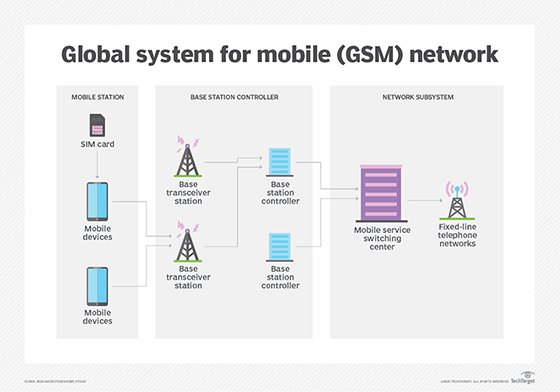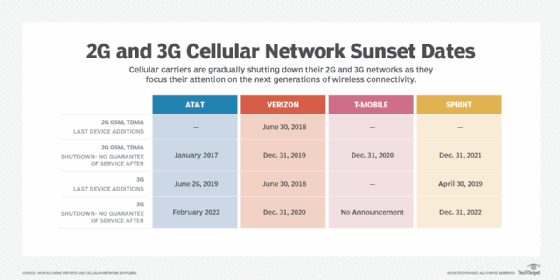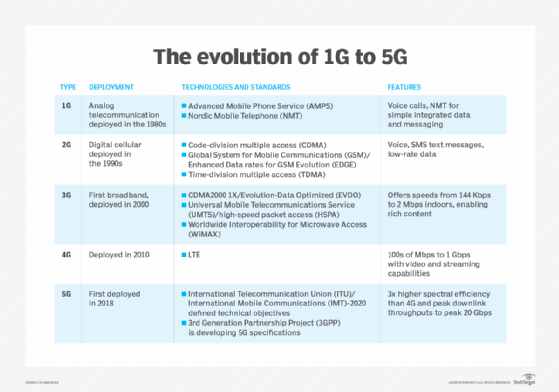Time Division Multiple Access (TDMA)
What is Time Division Multiple Access (TDMA)?
Time Division Multiple Access (TDMA) is a digital modulation technique used in digital cellular telephone and mobile radio communication. TDMA is one of two ways to divide the limited spectrum available over a radio frequency (RF) cellular channel. The other is known as frequency division multiple access (FDMA).
In simplest terms, TDMA enables multiple users to share the same frequency by dividing each cellular channel into different time slots. In effect, a single frequency supports multiple and simultaneous data channels. So, with a two-time slot TDMA, two users can share the same frequency. With a three-time slot TDMA, three users can share the same frequency and so on.
How does TDMA work?
In TDMA, users transmit in rapid succession, each using their own time slot. This shuttling process is so fast each user thinks they occupy the same RF channel at the same time. By allocating a discrete amount of bandwidth to each user, TDMA increases the amount of data that can be carried over the channel, while enabling simultaneous conversations.
In North America, a variant of TDMA called North American TDMA is used. Almost all 2G cellular systems use TDMA, including the following:
- Digital Advanced Mobile Phone Service
- Global System for Mobile communication (GSM)
- Personal Digital Cellular (PDC)
- Integrated Digital Enhanced Network
TDMA is also used in Digital Enhanced Cordless Telecommunications, a standard used to create cordless telephone systems in Europe, Australia, South America and Asia.

What are the differences between TDM and TDMA?
TDMA is not the same as time-division multiplexing (TDM), although the two concepts are often confused for each other.
What TDM and TDMA have in common is that every user is given a time slot through which their data is transmitted. However, in TDMA, once the user finishes using their time slot, it is freed, and they must wait for their turn to transmit again. Moreover, the user may get a different time slot each time they access the cellular network. Also, the multiplexed signals may come from different sources or transmitters.
In TDM, a specific time slot is always dedicated to a user, even if they're not using it. Furthermore, multiplexed signals come from the same mobile node.
What are the differences among TDMA, FDMA and CDMA?
Like TDMA, FDMA is also a channelization protocol. But, unlike TDMA, FDMA separates cellular channels (bandwidth) by frequency, not time. Each station is assigned a specific frequency band to send data. So, if users want two channels, they get two separate frequency bands.
In FDMA, different stations with different frequency bands are separated by small bands of unused frequency bands (guard bands) to prevent interference between stations. Unlike TDMA, synchronization is not required in FDMA. However, the drawback of FDMA is that it delivers lower power efficiency. FDMA is mostly used in GSM and PDC systems.
An alternative multiplexing scheme to FDMA and TDMA is Code-Division Multiple Access (CDMA). CDMA takes the entire allocated frequency range for a given service and multiplexes information for all users across the spectrum range at the same time. To put it simply, CDMA makes it possible for all stations to transmit data simultaneously without the need for frequency- or time-based multiplexing.
The biggest advantages of CDMA are that it offers high data rates and is highly flexible. Further, unlike TDMA, CDMA does not require synchronization. A drawback of CDMA is that different stations share both bandwidth and time, necessitating both guard bands and guard time.

What are the advantages of TDMA?
TDMA divides RF into time slots that are allocated to multiple users. So, the available channel bandwidth is used by every user and sequentially time-shared. Users take turns in using the channel in an efficient and timely manner. So, compared to analog systems, TDMA improves spectrum efficiency.
All users are assigned nonoverlapping time slots to use the channel turn by turn. This avoids intersymbol interference, an unwanted phenomenon wherein one symbol interferes with subsequent symbols to distort the signal -- decreasing communication reliability. As a result, a guard band of unused frequencies is not required between adjacent channels. TDMA also permits flexible rates, where multiple time slots can be assigned dynamically to a user.
Furthermore, since transmission is noncontinuous -- although it appears so to each user -- the transmitter can be turned off when not in use. This results in low battery consumption compared to FDMA.
All these advantages make TDMA highly suitable for advanced mobile phone systems.

What are the disadvantages of TDMA?
In TDMA, a guard interval must be added between adjacent TDMA slots to reduce interference between transmissions and prevent overlapping transmissions. This short time interval requires extra time and energy, which can be a critical limiting factor for cellular networks operating on limited energy.
In TDMA-based systems, guard times of 30-50 microseconds between time slots are commonly used.
Synchronization is also necessary in TDMA due to the burst mode of data transmission.
Another drawback of TDMA is that, compared to CDMA, it only offers medium data rates and moderate system flexibility.







